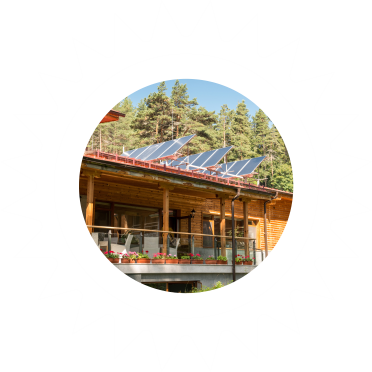Making Money with Batteries
Venture capital investments in the energy storage sector topped $175 million in the first half of 2016, according to Mercom Capital Group, whose analysis shows that lithium-ion and sodium-based batteries received the lion’s share of that money. There is no doubt that batteries will be a large part of the renewable energy future because they enable greater amounts of renewables to be connected to the grid. However, that future may be farther away than one might think, especially after visiting energy storage conferences and trade shows and talking to vendors.
“What you are up against is the wishful thinking that this is right around the corner but they’re just not,” said Andy Skumanich, founder of SolarVision Consulting and author of a recent report on energy storage.
Skumanich was referring to the residential energy storage technology vendors that were on display at Intersolar’s EES North America in July.
“Resi solar really isn’t a real market and the reason for that is because a diesel generator is just so cheap,” he said.
He added: “To some extent if you are getting repeated blackouts, you buy this capital equipment that sits there for 99 percent of the time and then for one percent of the time you use it. So to me, it just doesn’t make a compelling business prospect.”
Skumanich believes that in the developed and industrialized world, where we already have a fairly robust grid, energy storage such as batteries will not be economically viable until storage costs come down considerably or grid power becomes overly expensive.
Money-making Markets
There are some markets where energy storage does make economic sense, according to Skumanich, who said the military is always willing to look at new technologies that could save the lives of soldiers in the field who have to carry fuel.
“The military is definitely interested in mobile electric capability and they don’t want to be hauling diesel around. They don’t mind paying extra for batteries,” he said.
In addition, in places where the grid is unreliable or non-existent, batteries are well-suited to solve problems of electricity supply.
Mio Dart, Systems Integrator Engineer with Redflow, an Australian company that manufactures a zinc-bromide flow battery, said that she sees a lot of promise for battery manufacturers to make money in markets where the grid is unstable.
“A lot of cities in the developing world only get power 6 or 8 hours a day and you have to deal with not having grid power the rest of the time and that’s just part of everyday life,” she explained.
“There is a way [for battery manufacturers and vendors] to make money simply by promising 24/7 or even near 24/7 power,” she added.
From Redflow’s perspective, these markets are the “low-hanging fruit” said Dart. She said in these cases, people use the Redflow battery to charge when there is grid power and discharge where there isn’t. Simple.
Dart said Redflow also does business in the Caribbean, which relies on diesel for a lot of its power generation. She said that companies in island nations might spend upwards of US $10,000 a year on, for example, one telecommunications site. Dart said that they could buy a storage system that will suit the site for much less than that.
“Now you won’t be completely eradicating the diesel but you’ll be greatly reducing it, maybe 50 to 80 percent,” she said adding that payback periods can be as low as 2.5 years and that Redflow’s battery is designed to last 7 to 10 years.
Dart said that outside of the Caribbean, Southeast Asia and Africa also hold promise as markets for energy storage.
In the developed world where the grid is robust, Dart agrees with Skumanich that people who are purchasing energy storage solutions today are the early adopters who may not be driven by economics. Dart described these folks as people who want the newest technology in their homes, who bought electric vehicles 5 years ago and went solar 10 years ago.
“They are people who have a really green/environmental attitude and they really want to be maximizing their solar. They don’t mind spending more money as long as it’s going to reduce their carbon emissions,” she said.
Control Systems Will Unlock Battery Potential in the Future
Outside of purchasing a standalone energy storage system for standby power, another real potential for energy storage suppliers to make money is in the future grid scenario that was laid out in a recent Navigant/Renewable Energy World webcast titled “The Integrated DER Ecosystem: DER, Network Orchestrators and Platforms for Growth in the Energy Cloud.”
By Navigant’s definition, distributed energy resources (DERs) consist of distributed generation (solar PV, small wind, micro-turbines, fuel cells, natural gas and diesel gen sets); energy storage systems (batteries and the like); microgrids; EV charging loads; and demand response. With such a large array of resources, the linchpin will be the software that controls the assets.
Redflow’s Dart explained that software providers, such as Geli and the Greensmith, will help grow the energy storage market. In the simplest terms, she explained that “you can have a battery there but if it’s not being operated correctly it’s not going to make you any money.”
“If it is operating at the wrong time; if it is charging at peak time and discharging at off-peak that’s exactly the opposite of what you want,” said Dart.
Further, there are models being proposed in which a utility might lease a battery storage system to a homeowner with a provision that the utility is able to operate that battery up to 5 percent of the time during peak demand.
In this scenario, the control system needs to determine when those peak events are happening, charge or discharge accordingly in order to prepare for those peak events, operate during that peak event, and then after the peak event make sure that the system isn’t creating a new peak event by recharging right away, said Dart.
“So you have to have pretty robust communications and control systems in place to be able to speak to the utility in a comprehensible way,” explained Dart.
SolarCity is one potential utility partner that is hoping to provide these types of grid services to utilities, according to Ryan Hanley, VP of Grid Services, and a speaker on the Navigant webcast.
Hanley explained that SolarCity sees itself profiting “from deploying assets, it also can come from pay-for-performance in providing grid services and from software licenses,” he said, adding “If we are providing the ability for operators to dynamically control these assets there could be software-as-a-service plays either for us or other folks that are providing these platforms.”
SolarCity is participating in several pilot projects with utilities in California to study how to dynamically control grid assets that include batteries in hopes of understanding how to be profitable in a market that uses energy storage, solar and other DERs. New York is also paying close attention to this new energy paradigm as are other states.
But at this point, almost all of the projects out there are studies and it will likely be many years before we have real clarity on the value of energy storage. Further, it’s important to note that neither Redflow nor SolarCity are profitable companies yet.
Andy Skumanich offers what might be a realistic timeline.
“Simply as a value proposition, energy storage is not there and that’s kind of the bottom line. It won’t be there for another decade.”
Original Story from Renewable Energy World – Source



0 Comments